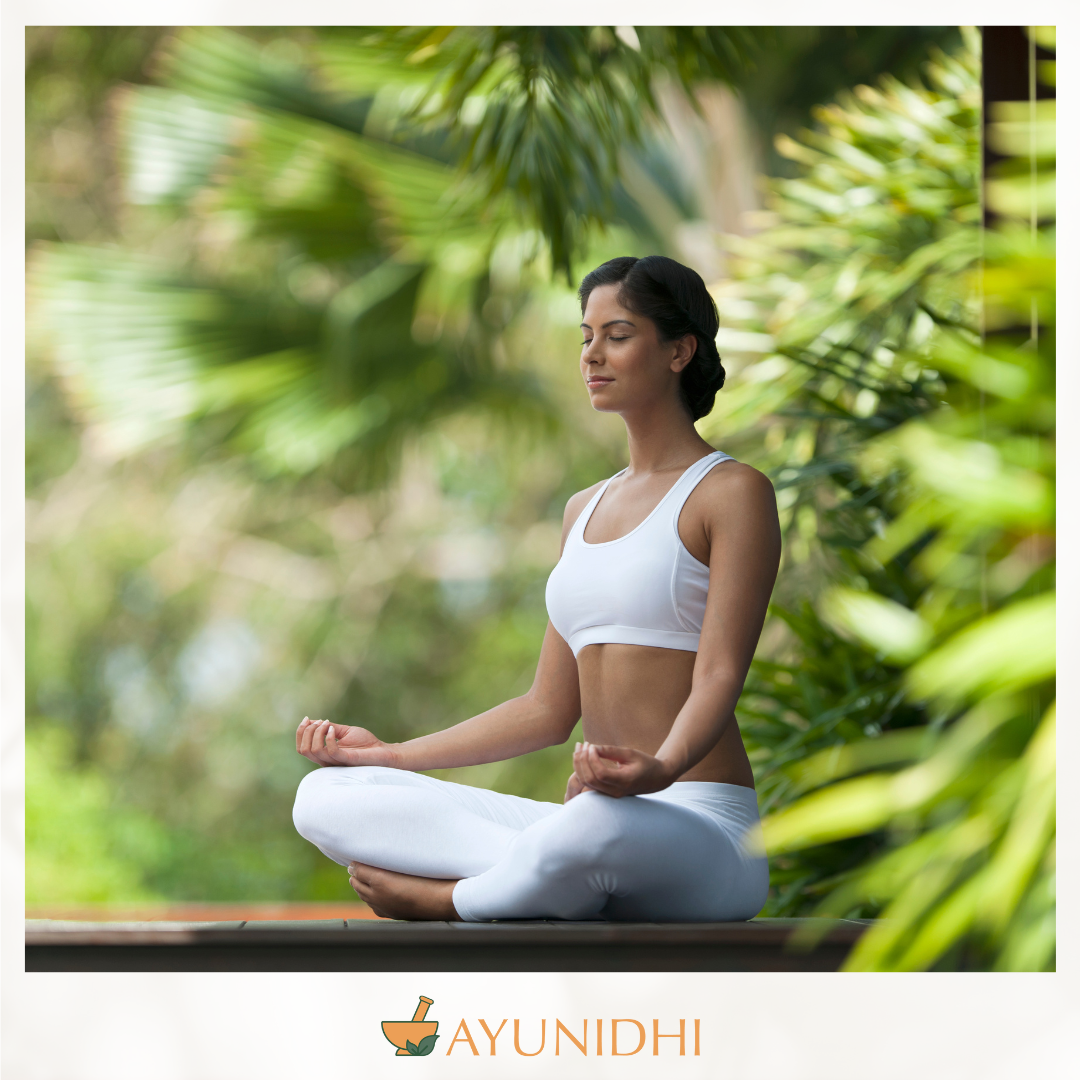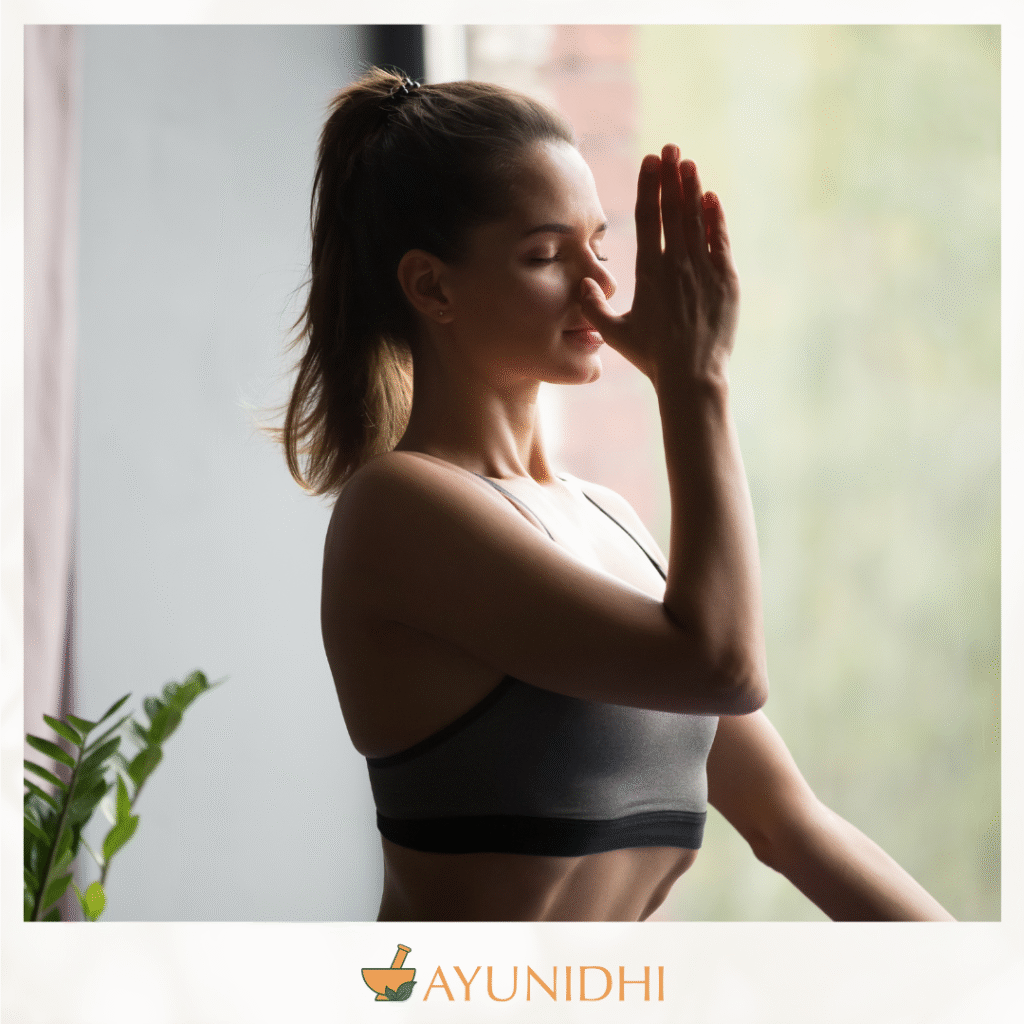
In today’s fast-paced, hyperconnected world, stress, fatigue, and imbalance are increasingly common. Many of us look for relief through diet trends, exercise routines, or mindfulness apps. While helpful, these often lack personalization and depth. What’s missing is a sustainable system that sees each person as unique — body, mind, and spirit.
This is precisely what the ancient sister sciences of yoga and Ayurveda for wellness offer. Developed side by side in India more than 5,000 years ago, these traditions are not separate paths but complementary systems of healing and transformation.
Yoga gives us practices of posture, breath, and meditation that calm the nervous system and discipline the mind. Ayurveda provides the framework to personalize those practices to each individual’s constitution, environment, and life stage. Together, they form one of the most holistic systems of wellness known to humanity.
This article explores their shared roots, scientific validation, and practical steps to integrate them into your daily life for balance, vitality, and resilience.
Shared Roots: The Vedic Foundation
The relationship between yoga and Ayurveda is deeply woven into the fabric of Vedic philosophy. Both arise from the same worldview — that human beings are microcosms of the larger universe, and health is found in aligning with natural rhythms.
Ayurveda is often called the healing branch of the Vedas, designed to preserve life and prevent disease through balance. It teaches that health is achieved when the three doshas — vata, pitta, and kapha — remain in equilibrium, digestion (agni) is strong, and the life essence (ojas) is nourished.
Yoga, meanwhile, is the spiritual discipline of the Vedas, guiding the practitioner to union with the higher self. Its practices — asana, pranayama, meditation, and ethical living — refine the body and mind so consciousness can expand.
Both share philosophical roots in Samkhya, which explains creation as a dance between purusha (pure consciousness) and prakriti (matter, composed of the three gunas: sattva, rajas, tamas). Ayurveda applies this framework to health; yoga applies it to liberation.
Because of these shared origins, yoga and Ayurveda were never meant to be separate. They are two branches of the same tree, designed to support each other.
Ayurveda: The Framework of Personalization
At its heart, Ayurveda is about personalized wellness. It recognizes that what nourishes one person may destabilize another. The system describes three primary constitutions, or doshas:
- Vata (air + ether): light, mobile, quick-thinking, but prone to anxiety, fatigue, and irregular digestion.
- Pitta (fire + water): sharp, focused, passionate, but prone to irritability, inflammation, and burnout.
- Kapha (earth + water): stable, compassionate, enduring, but prone to sluggishness, congestion, and lethargy.
When balanced, each dosha expresses vitality. When disturbed, symptoms emerge physically, mentally, and emotionally.
Applied to yoga, Ayurveda shows us that the same practice can have opposite effects depending on constitution. A hot power yoga class might benefit someone with kapha imbalance, but it could inflame a pitta individual or exhaust a vata type.
This is why Ayurveda’s wisdom is so essential. It gives us the discernment to choose yoga practices that truly heal.
Yoga: The Practice of Union
While often associated with postures, yoga is far more comprehensive. Patanjali’s Yoga Sutras outline the eight limbs:
- Yama – ethical disciplines
- Niyama – personal observances
- Asana – physical postures
- Pranayama – breath regulation
- Pratyahara – sense withdrawal
- Dharana – concentration
- Dhyana – meditation
- Samadhi – union
Together, these form a system that strengthens the body, calms the mind, and purifies the spirit.
When aligned with Ayurveda, yoga becomes medicine. Each posture, breath practice, and meditation is chosen to balance the doshas, nourish ojas, and restore harmony.

Dosha-Specific Yoga Practices
Yoga for Vata
Vata types thrive on grounding, stability, and warmth. Practices should be slow, steady, and calming.
- Asanas: Long-held forward bends, restorative poses like child’s pose and supported savasana, gentle hip openers.
- Pranayama: Alternate nostril breathing (nadi shodhana), deep diaphragmatic breathing.
- Meditation: Visualization or mantra repetition to anchor the restless mind.
Avoid fast-paced, overly stimulating practices that increase lightness and mobility.
Yoga for Pitta
Pitta types benefit from cooling, moderation, and surrender. Practices should release heat and cultivate calm.
- Asanas: Gentle backbends, twists, moon salutations, supported forward bends.
- Pranayama: Sheetali (cooling breath), chandra bhedana (left-nostril breathing).
Meditation: Compassion, loving-kindness, and gratitude meditations to soften intensity.
Avoid heated rooms, excessive competition, or pushing to exhaustion.
Yoga for Kapha
Kapha types need stimulation, movement, and invigoration. Practices should be dynamic and energizing.
- Asanas: Sun salutations, standing poses, inversions, energizing flows.
- Pranayama: Kapalabhati, bhastrika, dynamic breathwork.
- Meditation: Active or guided practices that prevent stagnation.
Avoid overly restorative practices that reinforce heaviness and inertia.
By practicing in this way, yoga and Ayurveda for wellness become a personalized, effective system of balance.
Dinacharya and Ritucharya: Daily and Seasonal Rhythms
One of Ayurveda’s gifts is its emphasis on rhythm. Health is sustained not through sporadic effort but through consistent daily and seasonal alignment.
- Dinacharya (daily routine): Waking early, tongue scraping, oil pulling, self-massage (abhyanga), yoga and pranayama in the morning, mindful meals, evening wind-down, and sleep by 10 p.m.
- Ritucharya (seasonal routine): Adapting diet, yoga, and lifestyle with the seasons. Cooling practices in summer, warming in winter, cleansing in spring, and grounding in autumn.
When yoga aligns with these rhythms, it multiplies its effects. Morning energizing flows, midday breath breaks, and evening restorative sequences synchronize the body with nature’s cycles.
Practical Application: A Week of Integration
Imagine how this might look in your own life:
- Monday: Morning sun salutations followed by alternate nostril breathing; light, grounding breakfast. Evening restorative yoga with warm milk and nutmeg.
- Tuesday: Cooling twists and moon salutations to balance pitta energy; meditation on gratitude. Tulsi tea at midday.
- Wednesday: Invigorating vinyasa sequence with kapalabhati for kapha balance; uplifting music meditation in the evening.
- Thursday: Gentle hip openers, pranayama, and a mindful lunch ritual.
- Friday: Abhyanga self-massage, dynamic yoga to clear the week’s heaviness, and a joyful walk in nature.
- Saturday: Restorative morning with yoga nidra. Seasonal cooking aligned with your dosha.
- Sunday: Community practice or meditation, journaling, and light seasonal cleansing rituals.
This rhythm doesn’t have to be rigid. The point is integration — weaving yoga and Ayurveda into daily life as living practices.
Conclusion: Toward Sustainable Wholeness
The union of yoga and Ayurveda offers more than health tips — it offers a philosophy of living. Yoga gives the discipline of practice; Ayurveda provides the wisdom of personalization.
Together, they form a holistic system that prevents disease, balances the doshas, calms the mind, and strengthens resilience. This is the essence of yoga and Ayurveda for wellness: a way of life rooted in harmony with nature and guided by self-awareness.
Whether you begin with a sun salutation suited to your constitution, a cup of tulsi tea, or ten minutes of meditation before bed, every step plants seeds of balance. Over time, these practices compound into profound vitality, clarity, and joy.
The path is not about perfection but integration. By weaving yoga and Ayurveda into your daily life, you discover not just how to survive, but how to thrive — with strength in your body, peace in your mind, and wholeness in your spirit.

